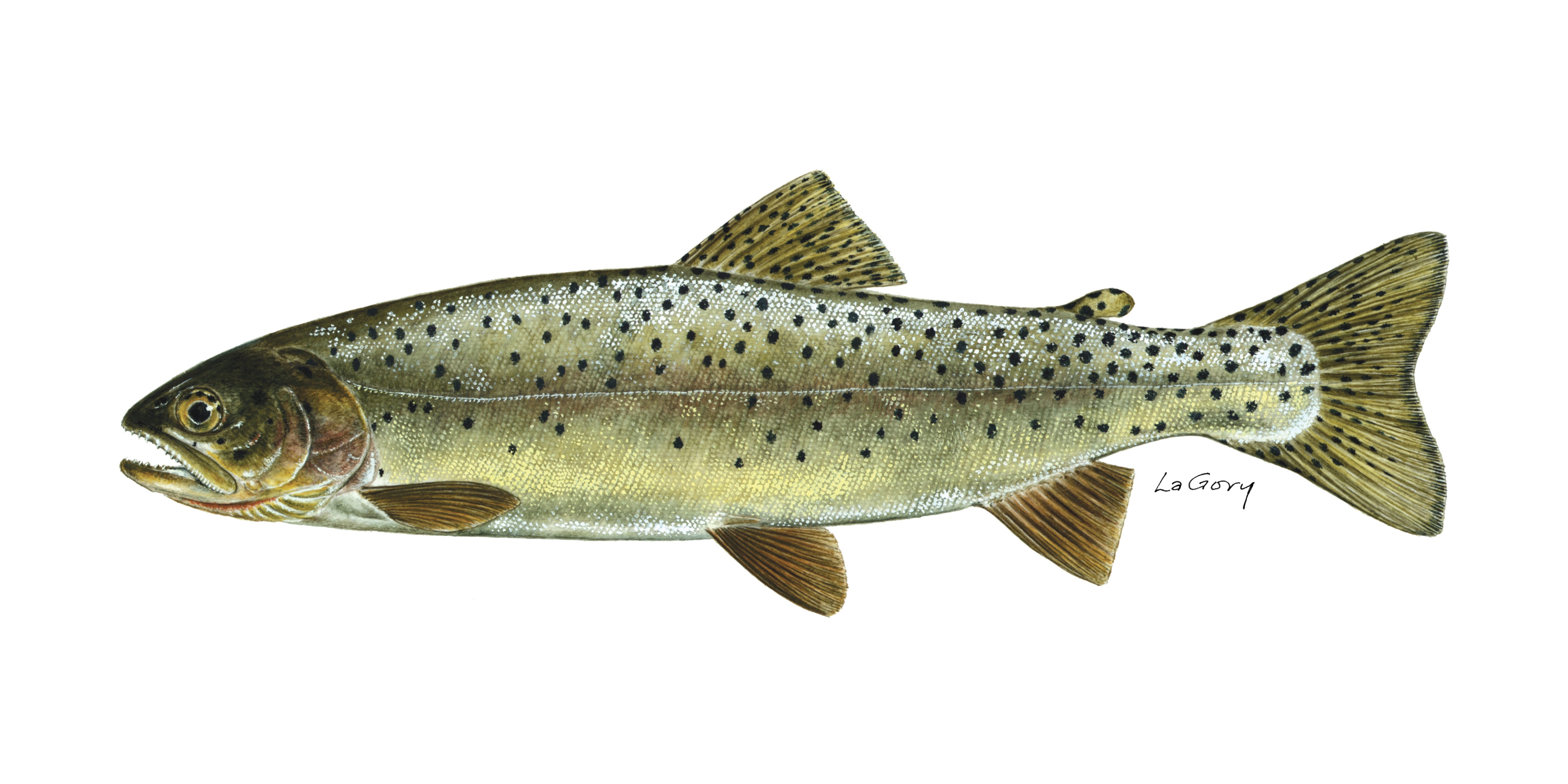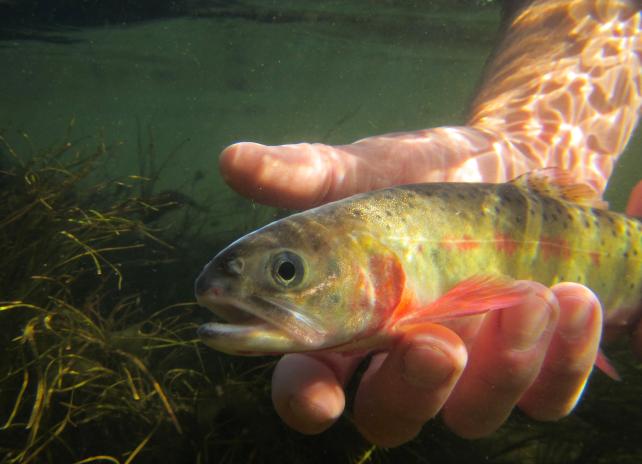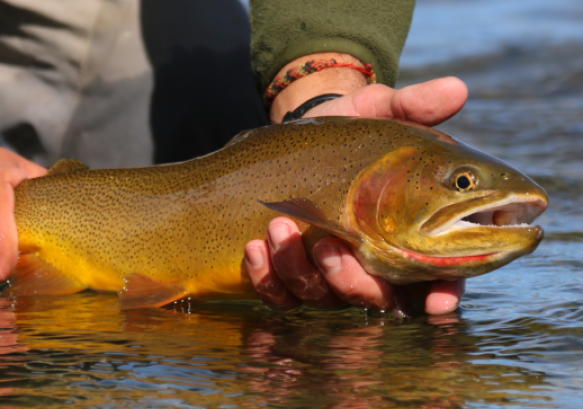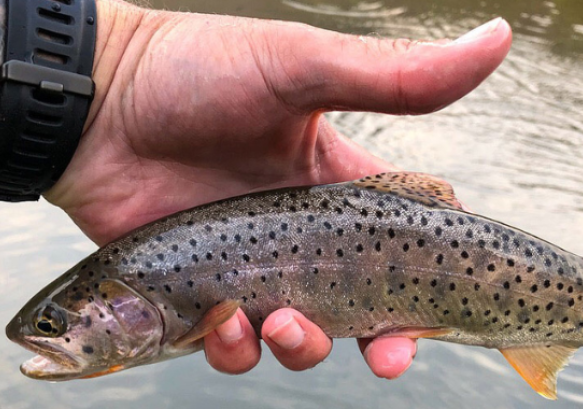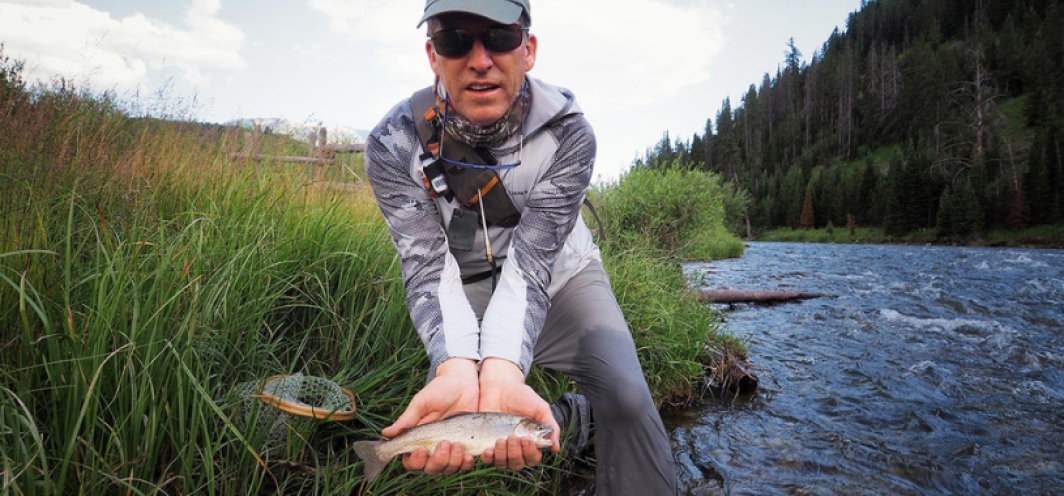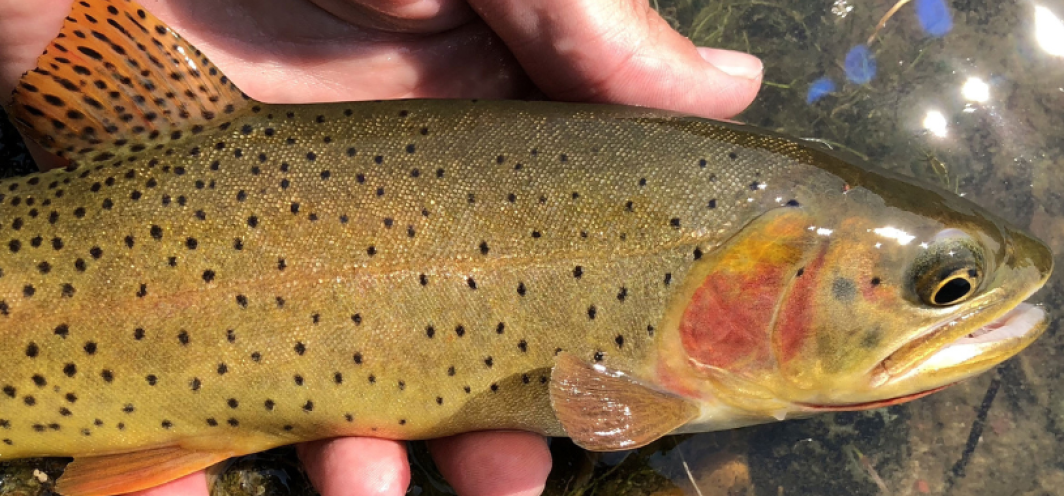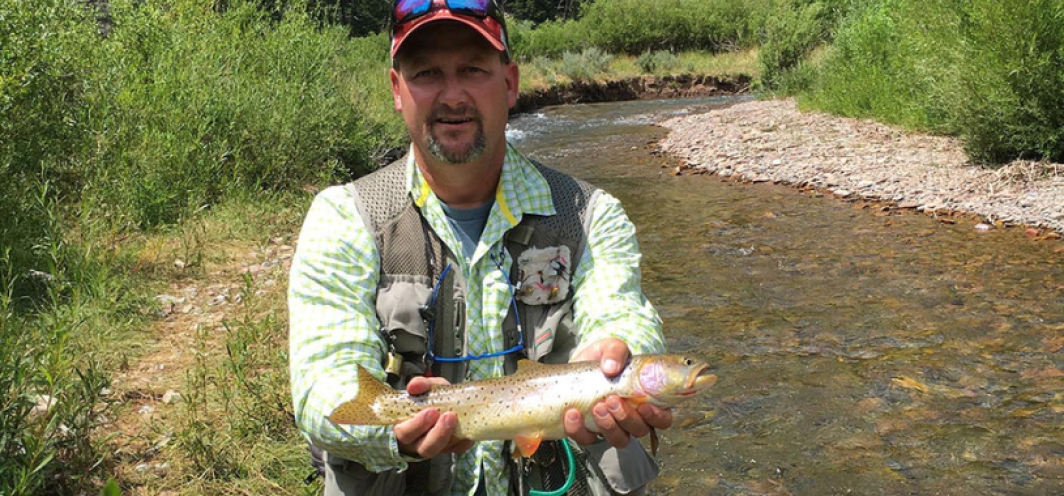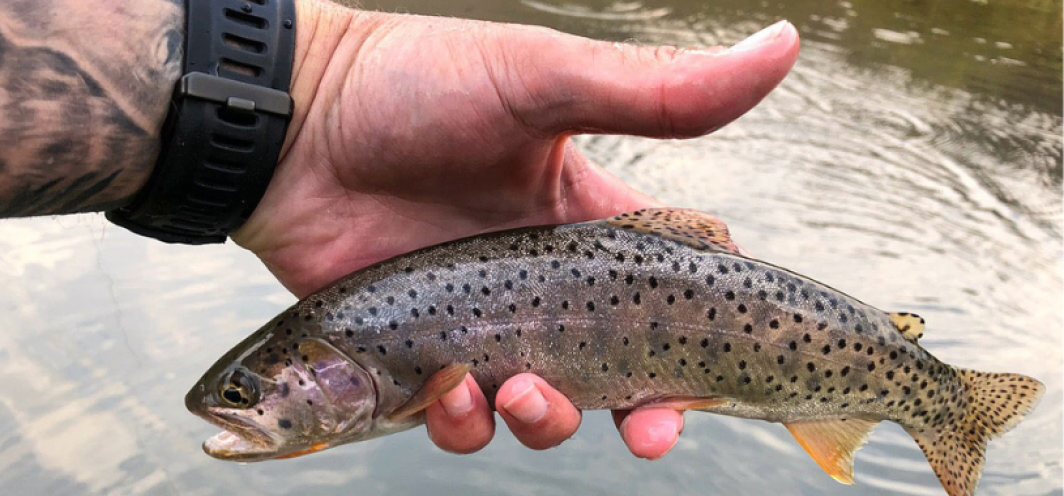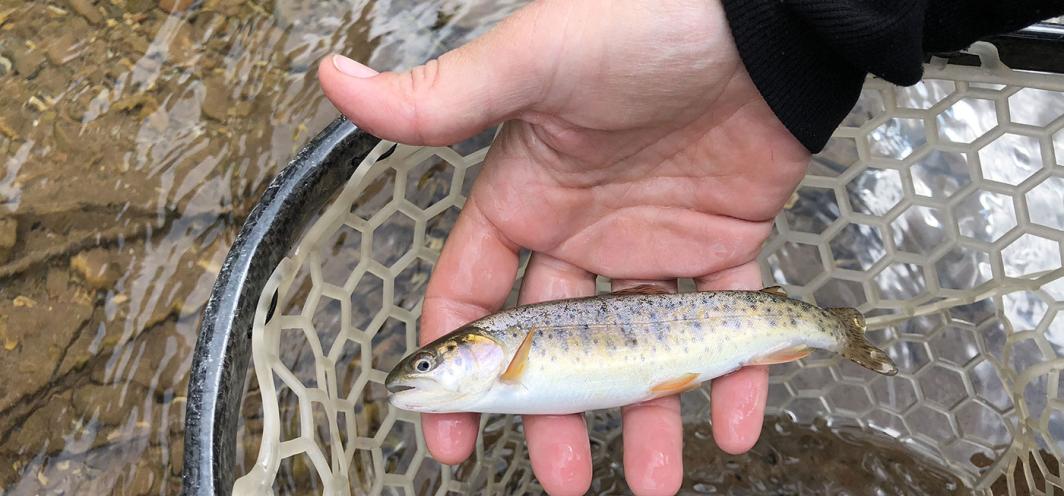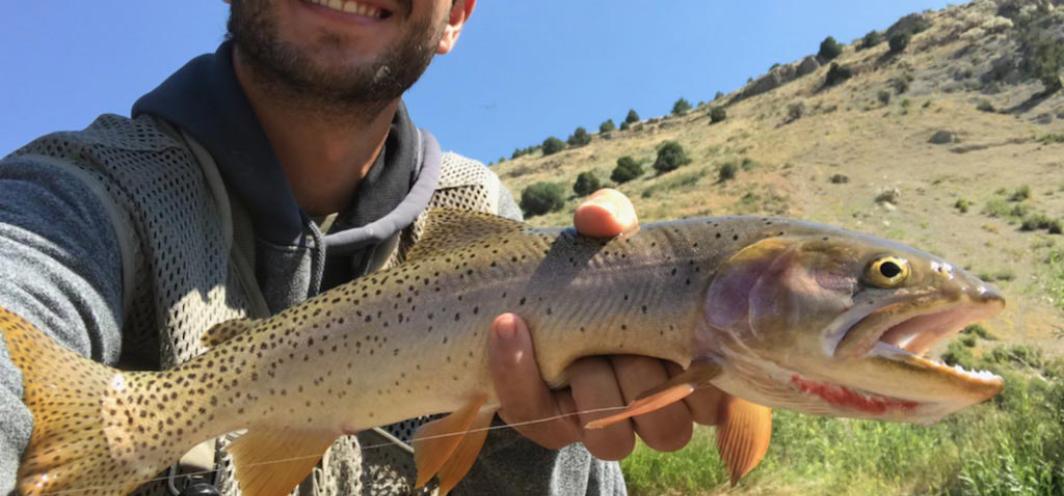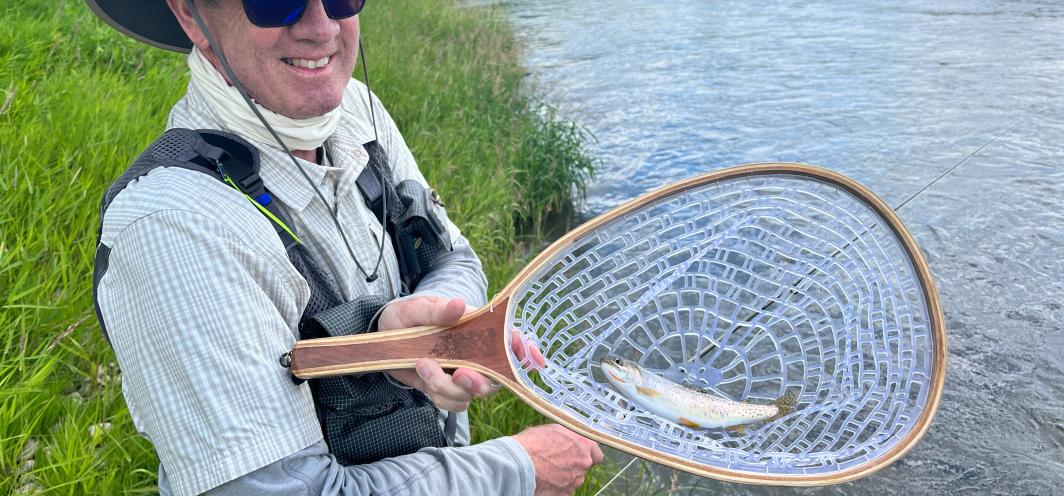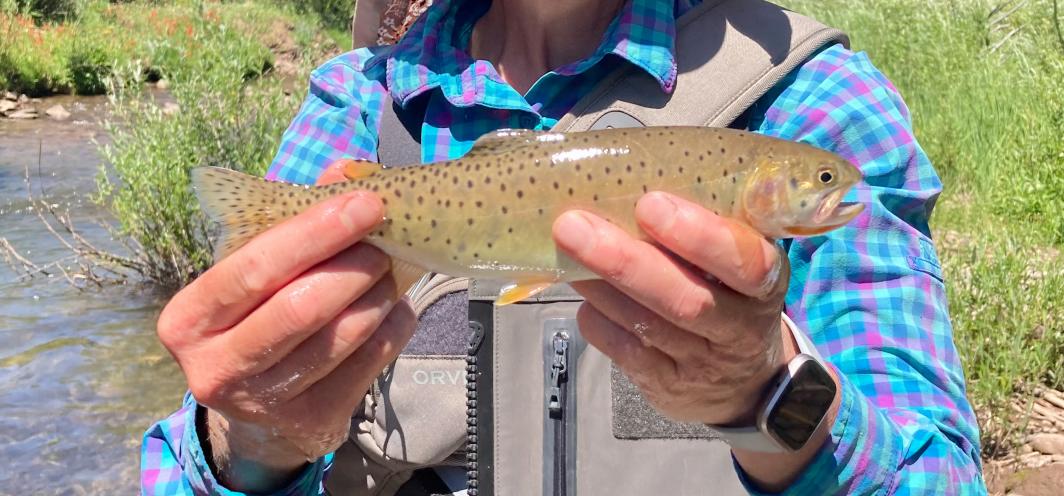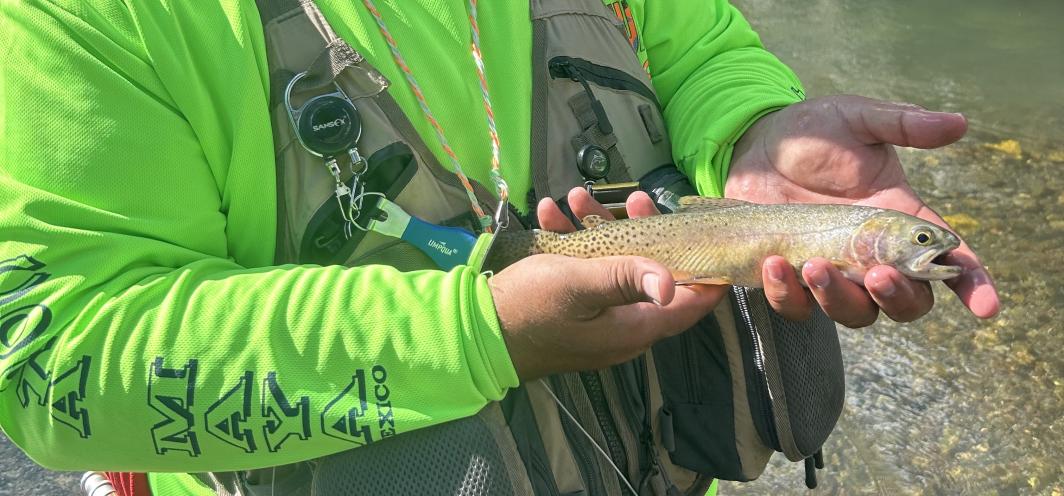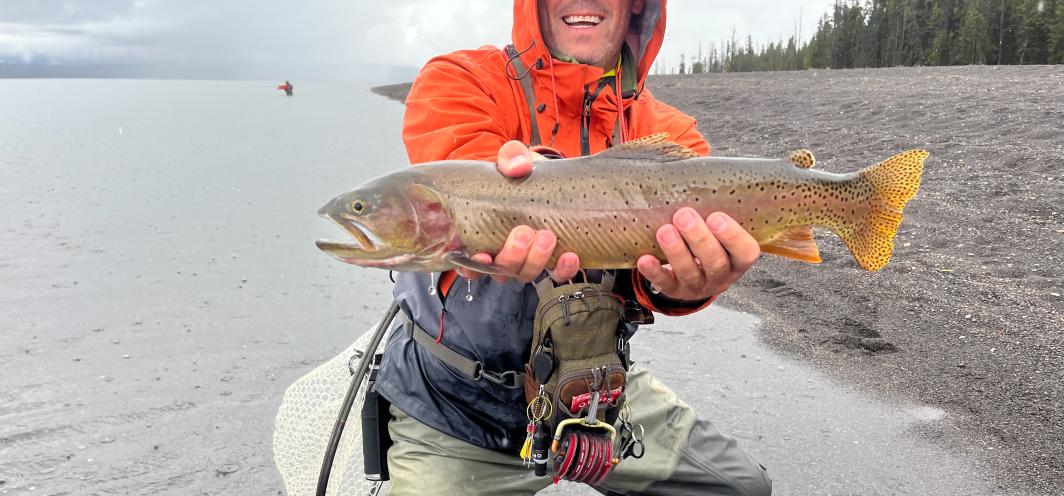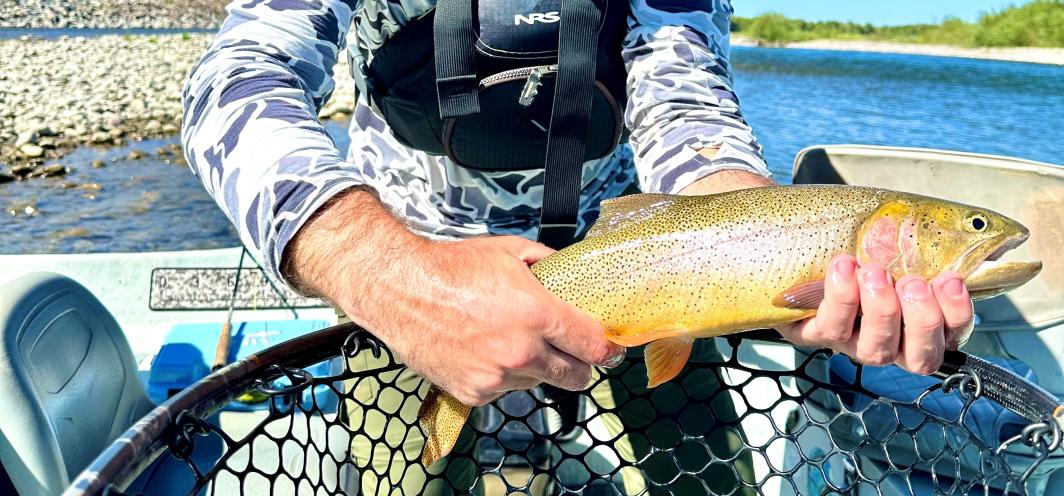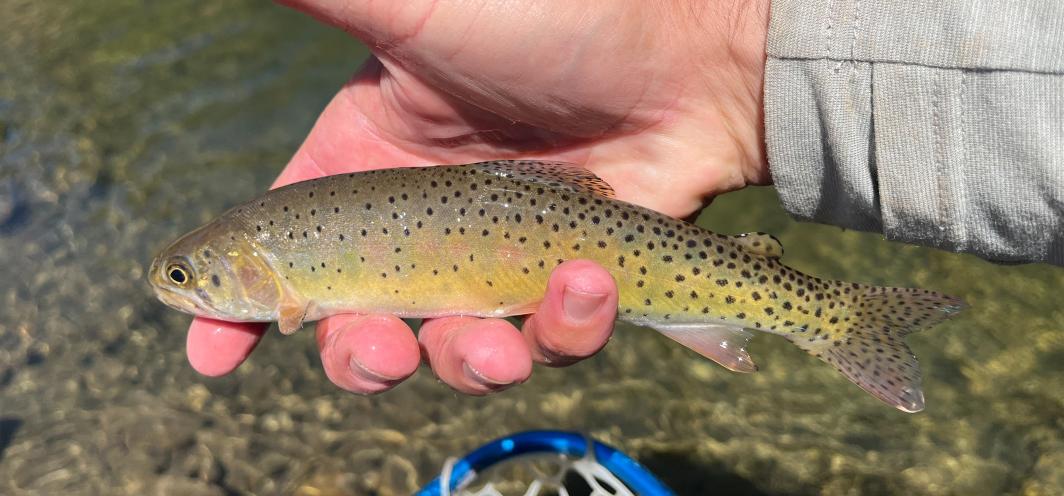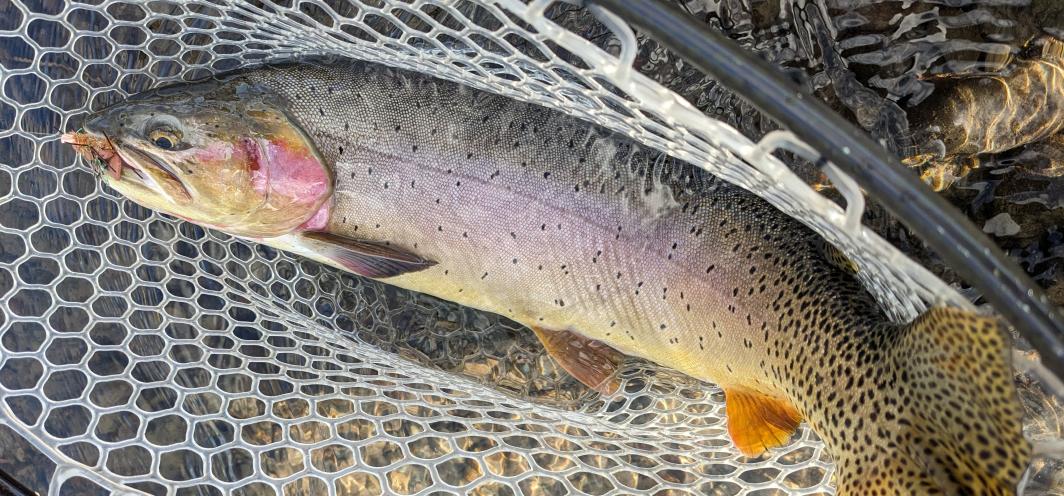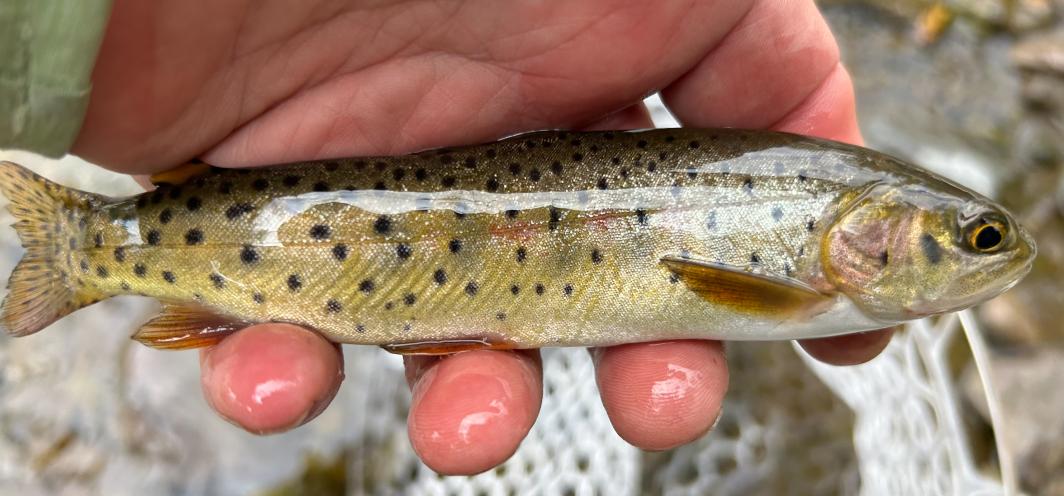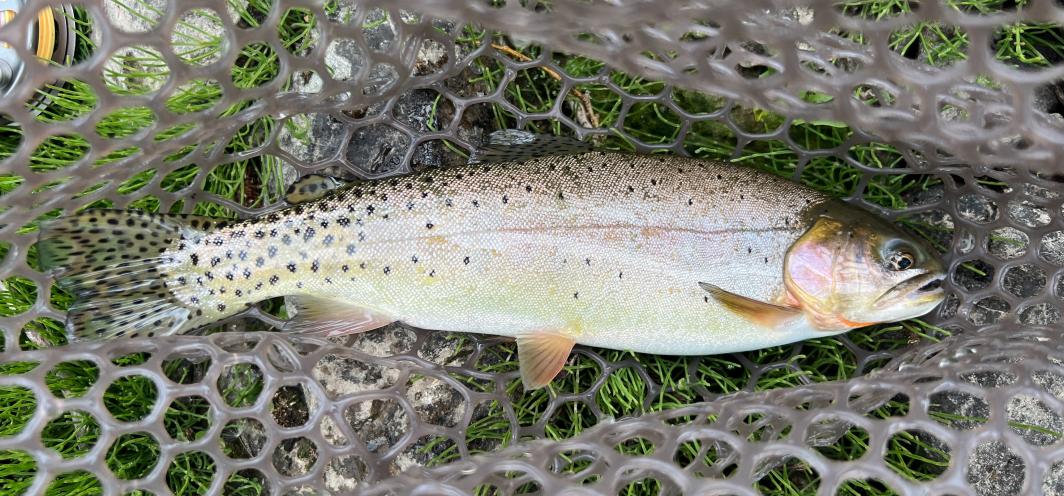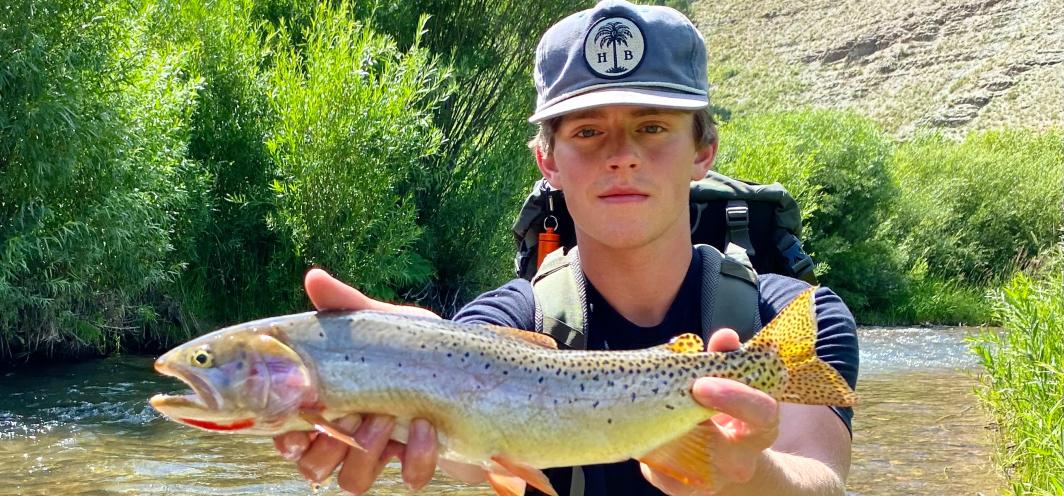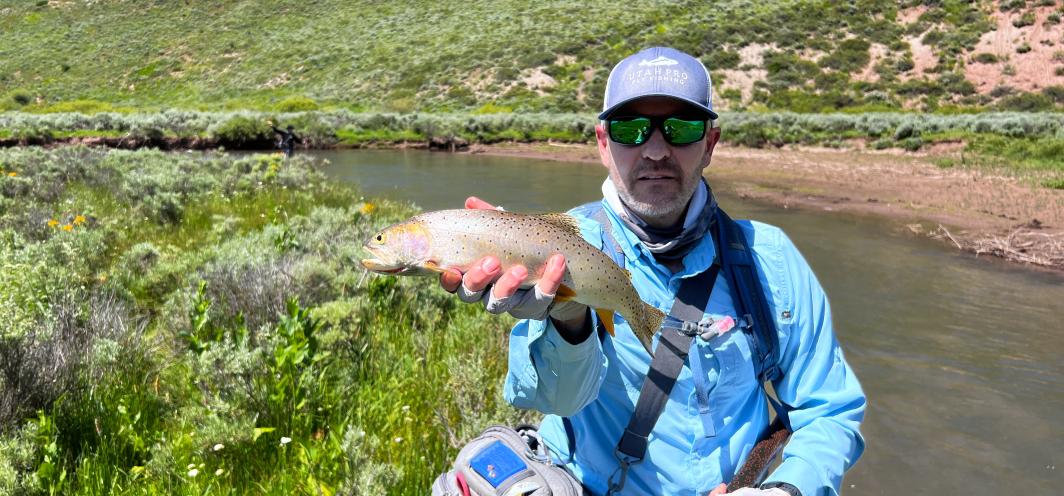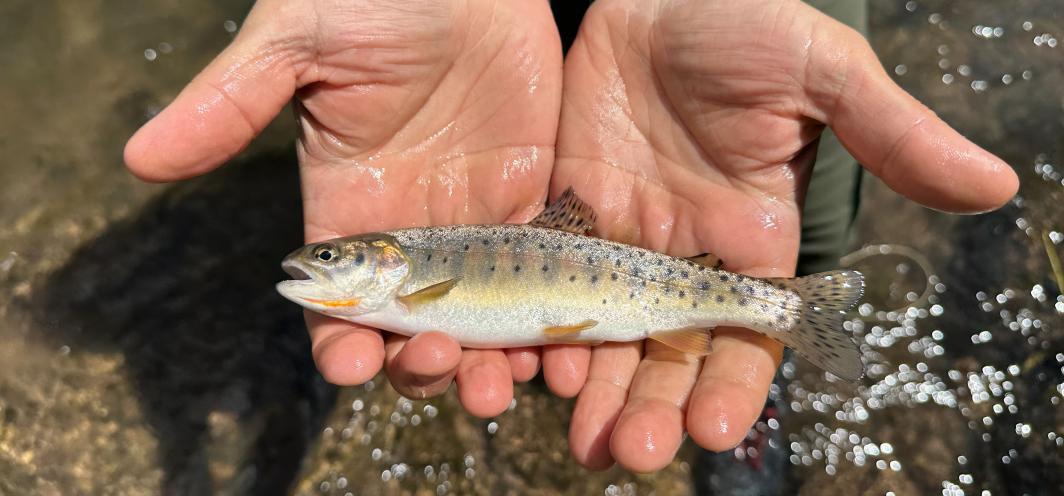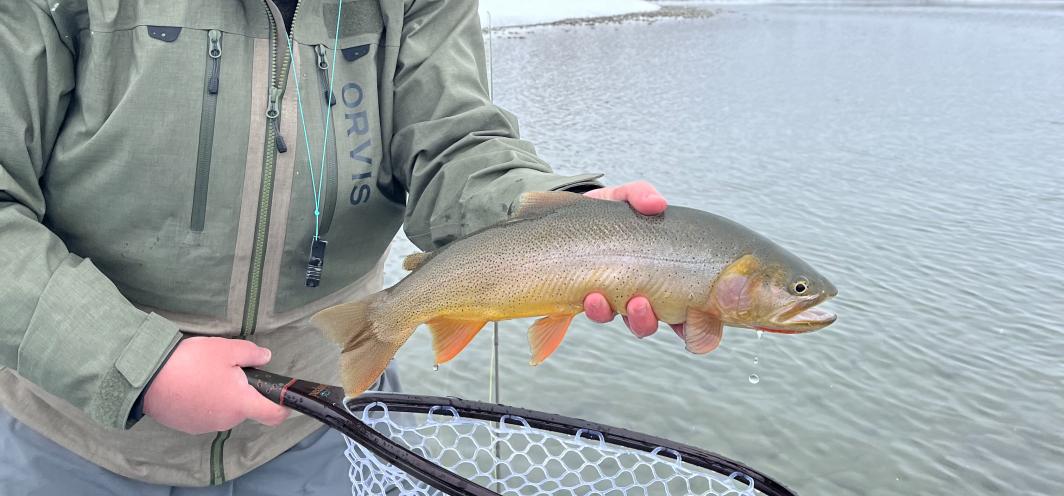How to participate in the Wyoming Cutt-Slam
Participation in the Wyoming Cutt-Slam is free and simple. Hit the road and catch Wyoming’s four cutthroat sub-species in their native range in Wyoming. To find out where, check out our interactive Cutt-Slam guide.
Take a clear photo of each fish and collect the date and location.
Attach your photos and enter your catches in the online Cutt-Slam application.
There are no time constraints on completing the Cutt-Slam. It may be completed over a lifetime or a day.
If you are having trouble applying or have questions about the Cutt-Slam, email us at wgf-cuttslam@wyo.gov
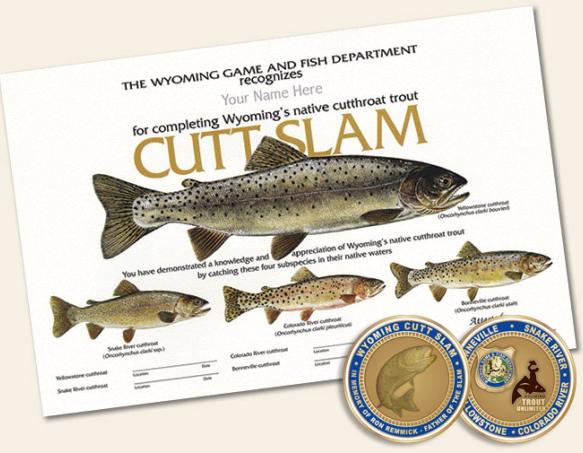
Recognition For Completing The Wyoming Cutt-Slam
Once we receive documentation that you have caught all four sub-species in their native range, the Wyoming Game and Fish will send you:
-
A personalized certificate featuring the four sub-species recognizing your accomplishment.
-
A Wyoming Cutt-Slam medallion provided by Wyoming Trout Unlimited.
-
A vehicle decal to show off your accomplishment on the road and around town.
While we encourage completion and submission of multiple Cutt-Slams, medallions and certificates are only provided for the first submission.
Where to catch native cutthroat trout
Wyoming is at the headwaters of the continent’s major river systems. Historically the state was home to six sub-species of cutthroat trout. Today five remain, including the Bonneville (Bear River), Colorado River, Snake River, Yellowstone and Westslope Cutthroat (only found in extreme northwest Wyoming in Yellowstone National Park and not part of the Wyoming Cutt-Slam).
The Wyoming Game and Fish Department is involved in numerous projects to protect and enhance these and other native fish resources for the enjoyment of the public and future generations.
The interactive guide below was created as a tool to aid anglers in planning a Cutt-Slam. The guide doesn’t include every water where anglers can complete the Cutt-Slam, and anglers are welcome to contact local biologists for more information and direction.
| Species | Drainage | Contact |
|---|---|---|
| Bonneville cutthroat | Smith Fork, Thomas Fork, Salt Creek | Pinedale Regional Office: 307-367-4353 |
| Bonneville cutthroat | Upper Bear River | Green River Regional Office: 307-875-3223 |
| Colorado River cutthroat | Cottonwood, Horse, Piney, LaBarge and upper Green River | Pinedale Regional Office: 307-3674353 |
| Colorado River cutthroat | Hams Fork, Blacks Fork, Smiths Fork, Little Snake River | Green River Regional Office: 307-875-3223 |
| Snake River cutthroat | Hoback, Salt, Greys, Gros Ventre, Snake River | Jackson Regional Office: 307-733-2321 |
|
Yellowstone cutthroat |
Upper Yellowstone, Clarks Fork, Shoshone, Greybull, Wood River | Cody Regional Office: 307-527-7125 |
| Yellowstone cutthroat | Popo Agie, East Fork Wind, Upper Wind River | Lander Regional Office: 307-332-2688 |
| Yellowstone cutthroat | Little Tongue, Little Bighorn | Sheridan Regional Office: 307-672-7418 |
Ron Remmick

Passionate advocate for cutthroat trout
Ron Remmick was a fisheries biologist for the Wyoming Game and Fish Department from 1978-2002 when his service was cut short by cancer.
Remmick was one of the kindest, hardest working and most passionate advocates for cutthroat trout Wyoming has ever seen. Recognized by Trout Unlimited and others for his vision and leadership towards cutthroat trout conservation, Remmick was a pioneer who laid the groundwork for today’s resource stewards.
Among Remmick's lasting legacies is the Wyoming Cutt-Slam, a 1996 idea he developed to “encourage anglers to learn about Wyoming’s cutthroat trout, and develop an appreciation for the habitat needs and management programs necessary to maintain these species”.
Cutthroat trout subspecies Information
Species description: The Bonneville cutthroat is typically dark-olive to brown on the dorsal (back) side with yellow to cream and grey on the lateral (side) surface. Spotting in all cutthroat is variable among populations and individuals. That said, a typical Bonneville cutthroat has dark, black spots -- often more uniformly distributed across the body than with other cutthroat -- with less concentration of spotting toward the tail than with other cutthroat in the Wyoming Cutt-Slam.
Species history: Bonneville cutthroat were historically found in the Bonneville Basin, including suitable habitat within portions of Utah, Idaho, Wyoming and Nevada. Scientists once believed pure strains of Bonneville Cutthroat were extinct. However, with the rediscovery of native populations and considerable restoration efforts by fisheries professional, nearly 70,000 acres of lakes and 850 miles of streams are home to Bonneville cutthroat today. In Wyoming, Bonneville cutthroat can be found in the Bear River drainage near Evanston and the Smiths and Thomas Forks of the Bear River near Cokeville.
Where to catch: The Bonneville cutthroat will take Cutt-Slam anglers to extreme southwest Wyoming. Good options for catching them are the Smiths Fork on the Bridger-Teton National Forest and Salt Creek (along U.S. Highway 89 between the Idaho state line and Salt River Pass.
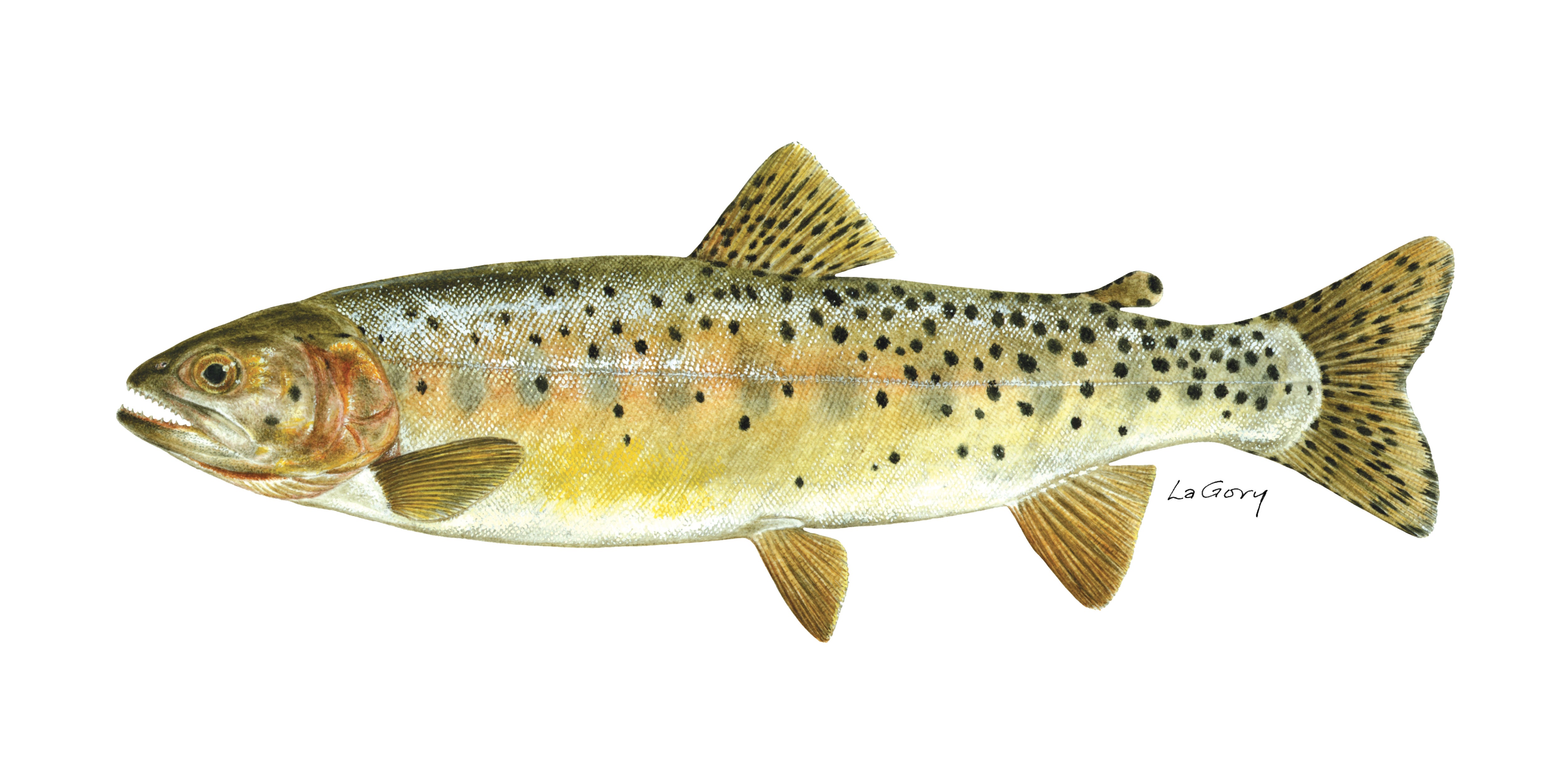
Species description: Typically olive-green to brown on the dorsal (back) side with golden-yellow to orange and red on the lateral (sides) surface. Spotting in all cutthroat is variable among populations and individuals. That said, a typical Colorado River Cutthroat has dark, black spots -- often larger than other cutthroat -- with the largest spots concentrated toward the tail.
Species history: Colorado River cutthroat historically occupied most cool-water habitats of the Colorado River watersheds in Colorado, southern Wyoming, eastern Utah, extreme northwest New Mexico and northeastern Arizona. Today they are found in less than 20 percent of their historic habitat and mostly in isolated streams at river headwaters. In Wyoming, Colorado River cutthroat can be found in the Little Snake River drainage near Baggs, the north slope of the Uinta Mountains along the Utah border near Mountain View and in the upper Green River drainage near Big Piney.
Where to catch: The Colorado River Cutthroat may be the most challenging cutthroat in the Cutt-Slam due to the remote, mostly small streams where it is found. Good options are LaBarge Creek upstream from the U.S. Forest Service boundary, North Piney Lake and Gilbert Creek south of Mountain View)
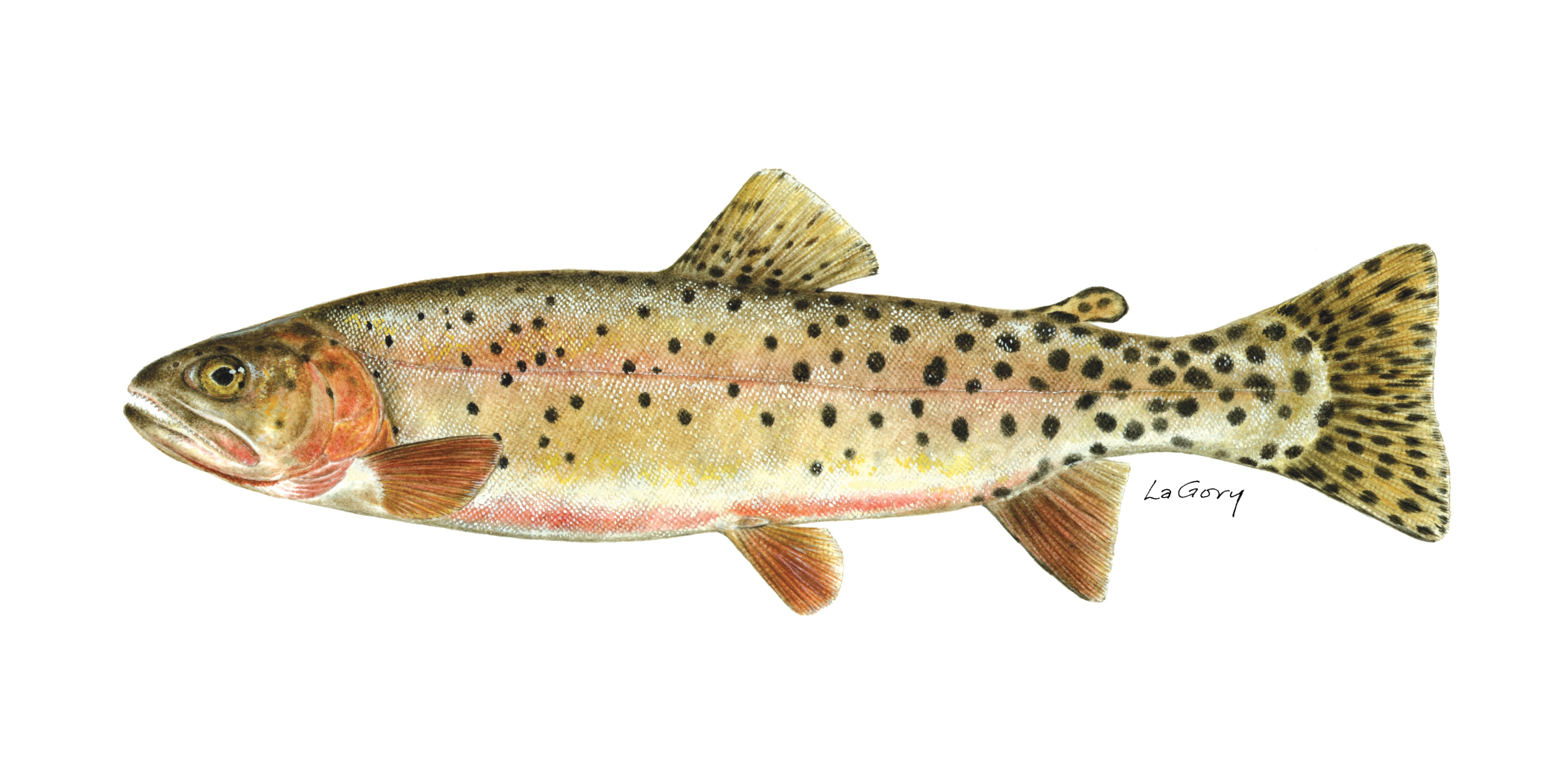
Species description: Typically dark-olive to brown on the dorsal (back) side with yellowish-brown to silver or brassy bronze on the lateral (sides) surface. Spotting in all cutthroat is variable among populations and individuals. A typical Snake River Cutthroat has numerous small, relatively evenly-sized dark, black spots covering the entire body except the belly.
Species history: Snake River cutthroat occupy most of their historic range in the Snake River above Palisades, and its major tributaries including the Gros Ventre, Hoback, Greys and Salt rivers. Snake River cutthroat with variable-sized spotting patterns are found in the Snake River drainage. All cutthroat from the drainage will be counted toward the Snake River cutthroat component of the Cutt-Slam.
Where to catch: Pursuit will take Cutt-Slam anglers near some of the most famous landscapes in Wyoming. However, anglers that look beyond the Tetons to places like the Salt or Greys rivers will be rewarded with equally beautiful scenery and fewer anglers to contend with.
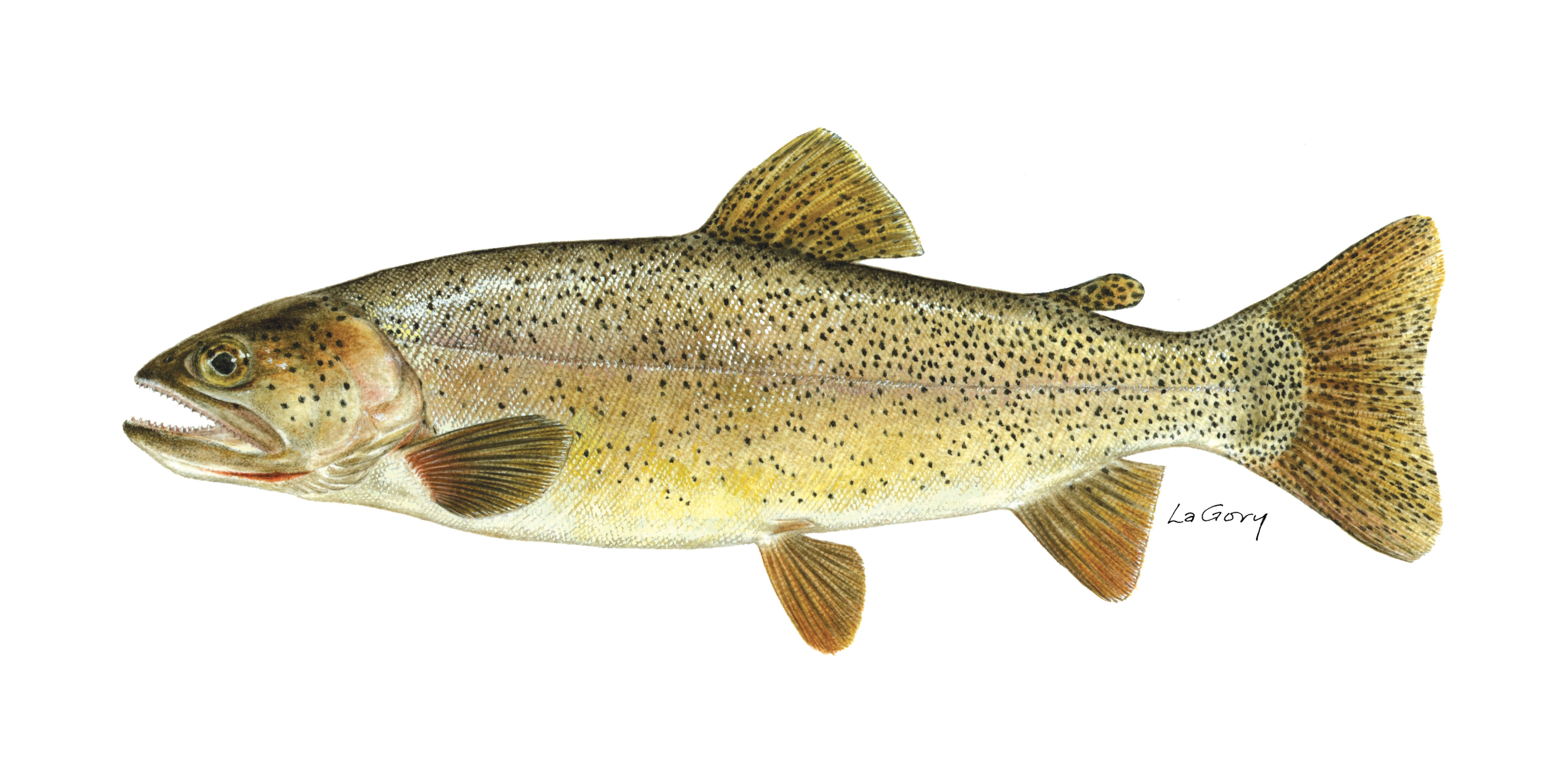
Species description: The Yellowstone cutthroat is typically olive-green to brown on the dorsal (back) side with yellowish-brown to silver on the lateral (sides) surface. A typical Yellowstone cutthroat has dark, black spots with spots concentrated toward the tail and few -- if any -- spots on the head.
Species history: The historical range was upstream of Shoshone Falls in southwest Idaho on the Snake River and its tributaries. It also existed across the Continental Divide in Yellowstone Lake and the Yellowstone River, and its tributaries downstream to the Tongue River. Today they occupy somewhere around 40 percent of their historic habitat with several large robust populations. In Wyoming, Yellowstone cutthroat can be found in a few small streams in the Bighorn Mountains near Sheridan, the Absaroka Mountains between Cody and Dubois and throughout most of Yellowstone National Park.
Where to catch: Yellowstone Cutthroat can be caught in small streams, large rivers, reservoirs, high-mountain lakes and every type of water in between. Good options are the Greybull and Wood rivers near Meeteetsee and the East Fork of the Wind River near Dubois.
